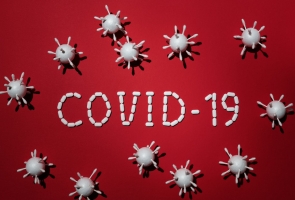Alternative medicine is an under-celebrated, over-stigmatized branch of the wellness industry. It is also one of the most underserved areas of healthcare in terms of acknowledgment or coverage by major health insurance companies. If you have been in this field for a while, you already know how true that is.
It is for those reasons, and many others, that the way you present what you do matters. You are asking people to pay for services – often out of pocket – and the need for people to understand their value is of utmost importance. Blogging is a powerful and effective way to convey your message and establish trust in not just the services you offer but also in your ability to help.
This is why I chose to cover this topic here. You know that the service you provide has value, and my team and I are here to show you how to communicate that value effectively through blogging.
Blogs are a great way to demonstrate your own knowledge of the treatments and services you provide. They also offer the perfect platform for demonstrating various social proofs (usually through the use of curated content that lends even more credibility to your practices).
With that in mind, here are a few things you can use to brainstorm and, ultimately, develop an effective holistic healing blog writing strategy.
Developing a Content Delivery Strategy
The most important aspect of any marketing initiative is the plan itself. All of your content creation needs to be planned and scheduled, and the work needs to be delegated to the right areas. Start by figuring out where all the following fit in:
• Blog Content
• Special Announcements/Press Releases
• Social Media Content and Engagement
• Search Engine Optimization (SEO)
Let’s look at each of these items individually and see how they work together.
#1: Email
If you don’t have a solid and growing email list, we have blog content that will help you develop that part of the plan. Blogging should play a key role in your email marketing. Blog content is the perfect springboard for email messaging and it allows you an excuse to get into people’s inboxes on a regular basis.
It is always a good idea to email your entire list at least once a week. In most cases, more often is even better. Not all audiences are created equal, however, so it will be necessary for you to refer to your analytics and determine how effective the system to devise actually is.
Factors like subject lines, frequency of messaging, and even the time of day when you send your emails play a defining role in how email is received. There is some more valuable information on that in this article from Aweber along with what you can find here.
#2: Blog Content
There are various ways to design and present a blog. The best way for your service is not something that can be determined or conveyed in a blog post. If people are responding to your current delivery and presentation methods, great. If not, here are a few things you can try:
• Paginate Your Articles – This means presenting one idea (or paragraph or subsection) per page, so the reader can digest your messaging in smaller chunks.
• Offer a Unique Perspective – Don’t mimic content that is already out there. Develop a unique voice. Work with writers who can write from authority and not just rewrite content that is already available from other sources.
• Format in Short Paragraphs – People tend to skim section titles and small chunks of text looking for information they consider to be relevant. If you separate your ideas in a way that makes each one uniquely visible, it will be more engaging. Chances are better that people will stop, read the line that catches their interest, then go back to understand the messaging in context. Format your blog in a way that is conducive to this kind of behavior.
• Experiment with Different Approaches – Some audiences prefer straightforward information. Others respond better to a more narrative approach. Some respond better when the tone of the article is a little more controversial. Experiment with different messaging styles and settle on the one or two that get the most consistently positive engagement.
• Watch for Large Files – Optimize all multimedia content so it opens quickly and does not dominate. 600×400 is still the gold standard for image sizing in blogs and social media posts, and utilities like TinyJPG will help you optimize image files for fast loads without a decrease in image quality.
#3: Periodical Communications
Content like newsletters and press releases can also be amply fueled by good blog content. If you introduce a new service or a new delivery method for an existing service, you should send a press release. In it, you can reference evergreen blog content that explains the process or develop a blog post that explains it and link to it in your press release.
Newsletters should be handled the same basic way and should be used in addition to a press release. Press releases aren’t typically sent to individuals like emails, but newsletters are. You will get further by letting each content type do the job for which it is intended.
#4: Social Media Content and Engagement
Blog posts are the backbones of numerous successful social media initiatives, and they are great conversation starters. Every time you post something new to your blog, your followers on social media need to know. This too will ultimately generate backlinks to your blog and help your blog climb the ranks in search engine results pages (or SERPs). That leads to my last point on this subject…
#5: SEO
All of the above content types can help you develop better SEO, which, in turn, leads to more organic blog traffic and more leads. Backlinks to the content itself coupled with content that is properly formatted and presented using relevant keywords in an organic fashion are a recipe for long-term success and sustainability for SEO.
Keep in mind that the above is just a thumbnail sketch. When our team at Beez takes on blogging work for our clients, we take all of the above into consideration and much, much more. Even if you decide to go it alone, we urge you to work with a professional content creation company like BeezContent to proofread or collaborate on alternative healing content creation and delivery. Doing so will help to ensure that your hard work is optimized and that it ultimately reaches your target audience.




